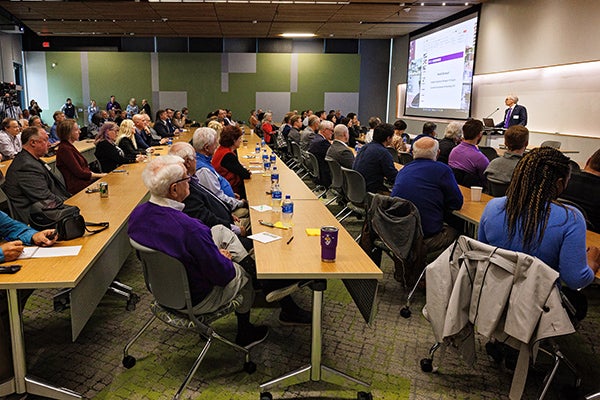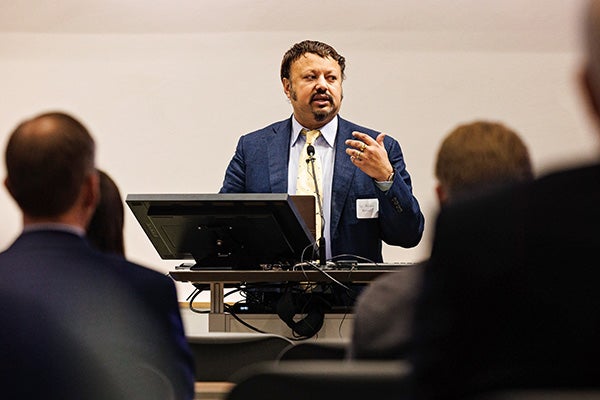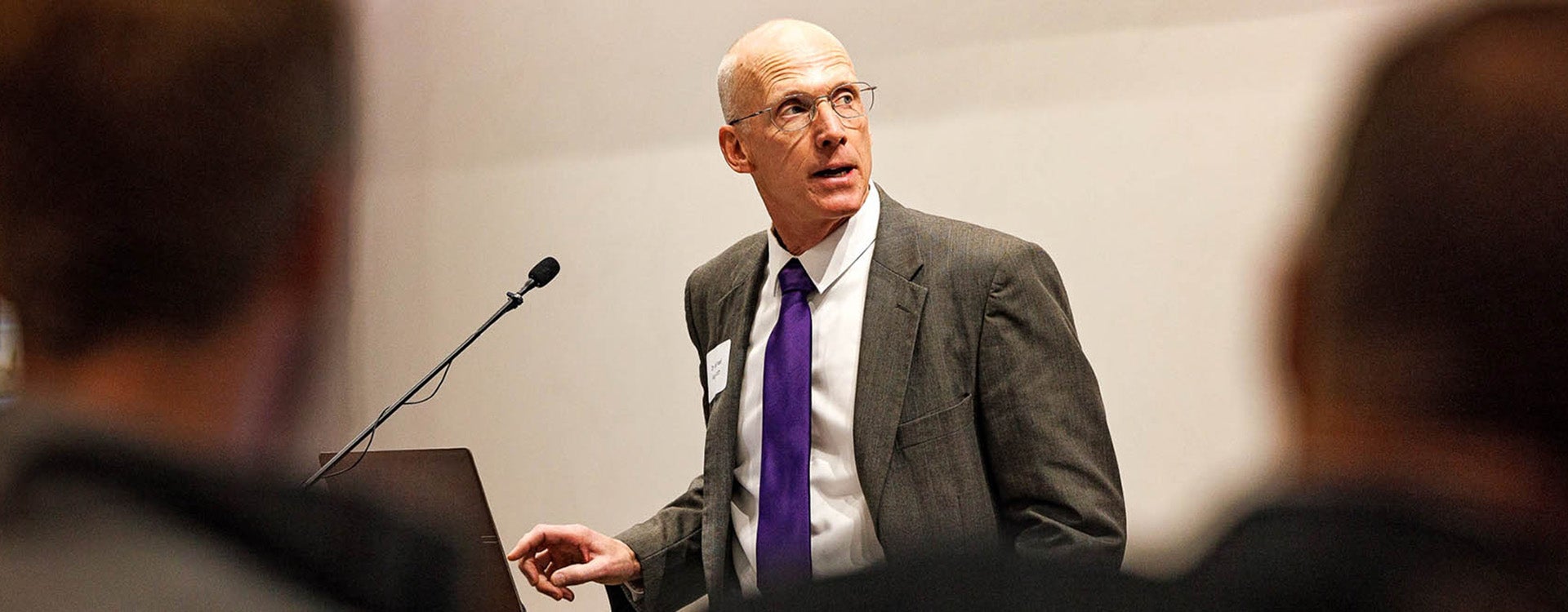Intersect East to help grow the region’s economy

A group of stakeholders gathers to hear a presentation on the economic impact of Intersect East on Wednesday at ECU’s Life Sciences and Biotechnology Building.
BY THE NUMBERS
Projections on the economic impact of Intersect East include about 3,300 jobs and $403.6 million in construction alone over the life of the project. Once completed, it is projected to employ 3,500 people with an estimated economic impact of $656.6 million.
As Intersect East takes shape off 10th Street in Greenville, East Carolina University officials and developer Elliott Sidewalk Communities welcomed distinguished guests from throughout the region to hear about the project’s expected economic impact on Wednesday.
Dozens of dignitaries gathered at ECU’s new Life Sciences and Biotechnology Building to listen to economist Dr. Anirban Basu of Sage Policy Group discuss job creation, salaries and fiscal impacts of the more than $150 million, eight-year effort to redevelop ECU’s former warehouse district.
“It’s about taking Greenville into the future,” Basu said.
The first phase of redevelopment involving a $40 million investment to renovate three buildings — dubbed The Prizery, The Stemmery and The Hammock Factory — started in October. Completion is expected by the spring of 2023.
The overall plan includes the renovation of 14 buildings and 1 million square feet of space. Green space, office space, retail space, dining and residential living will be created on 19 acres along 10th and Evans streets near ECU’s main campus.
With ECU as part of the redevelopment, Basu referred to the project as a research park. As such, its first phase includes 10,000 square feet in the former Export Leaf Building for the College of Engineering and Technology’s new digital transformation center that will cater to new and existing companies.
Basu pointed to statistics that show 64% of research parks added employment from 2007 to 2012, a period known as the Great Recession.
“They’re extraordinarily resilient,” Basu said.
He noted that Intersect East capitalizes on strong assets already in the community such as ECU and the health care and technology sectors.
“To have East Carolina University here, it’s a big deal. To have one of the largest hospitals in the world here, that’s a big deal. It’s amazing more people don’t know that’s the case,” he said.
“The most important key attribute of a research park was a good match between the core competency of the affiliated university … alignment of what the university is great at doing and will be great at doing and the tenants at the park.”
In construction alone, Basu’s study estimated roughly 3,300 jobs with an economic impact of $403.6 million over the life of the project.
Once completed, the project is expected to produce nearly 3,500 jobs with an economic impact of $656.6 million.
Basu said Intersect East would benefit ECU by helping attract the best students to a beautiful campus — and also keep them in Greenville and Pitt County when they graduate. He said Intersect East would build a cycle of success — businesses and companies will come because of talented students and a skilled workforce, thus attracting more students and more companies.

Sage Policy Group economist Dr. Anirban Basu speaks about Intersect East.
“What makes for a successful community? The community that can keep the best and brightest at home,” Basu said. “My guess is that one of the things people in Greenville would like is that when they produce really, really smart kids and those really, really smart kids go to East Carolina University, after they graduate, they want those kids to be able to stay here and not have to go to Raleigh or Charlotte or Washington, D.C., or Atlanta.”
Basu said Intersect East is not just a short-term project but one that will continue to shape ECU and the region’s economy for decades to come.
“It’s the right start,” he said. “It’s a way to channel the energy of East Carolina University into this community. It’s the start. It’s not the end.”
Other speakers at the event included: Dr. Mike Van Scott, interim vice chancellor for ECU’s Division of Research, Economic Development and Engagement; Dr. Michael Waldrum, dean of the Brody School of Medicine and CEO of Vidant Health; Sarah Bernart, industry expansions manager for the northeast region of the Economic Development Partnership of North Carolina; and Tim Elliott, managing partner of Elliott Sidewalk Communities.
Van Scott said ECU has the assets in place — such as design labs, business incubators, the Eastern Region Pharma Center and continuing and professional education — to support Intersect East and make it successful.
“It’s a reflection of what we value and how strongly we feel about serving our community,” he said.
The lease agreement between ECU and Elliott Sidewalk Communities to develop the innovation hub was approved by the UNC Board of Governors in 2020 as a public-private partnership. Public-private partnerships are collaborations in which private companies invest in public projects for a return while shielding public entities, like universities, from risk.
More information can be found on the Intersect East website.

Dr. Mike Van Scott, interim vice chancellor for ECU’s Division of Research, Economic Development and Engagement, speaks about the assets ECU brings to the Intersect East project.
Related
Breaking Ground
A New Era